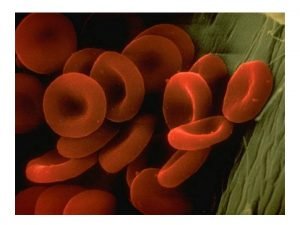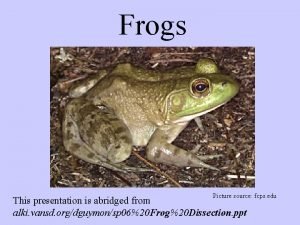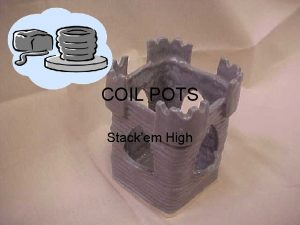Anasazi pots http www nativetech orgpot terypottery htm











- Slides: 11

Anasazi pots. http: //www. nativetech. org/pot tery/pottery. htm http: //www. germantown. k 12. il. us/html/south west. html Reproduction of miniature pot. http: //www. nativetech. org/p ottery/pottery. htm NATIVE AMERICAN POTTERY Hopi bowl. Reproductions of elbow pipes http: //www. nativetech. org/pottery. htm http: //www. germantown. k 12. il. us/html/southwes t. html http: //www. nativetech. org/ pottery/pottery. htm

CHRONOLOGY OF THE WINDSOR POTTERY TRADITION OF NATIVE AMERICANS IN SOUTHERN NEW ENGLAND http: //www. nativetech. org/pottery/chrono. htm

PREPARATION OF CLAY Natural clays are made from minute particles that often sunk in a still water after being carried by a stream. It is dried, ground, and impurities are sifted out. Then it is soaked in water. Sometimes a temper is added to help the clay hold-up in rapid changes of temperature. Quality clay is recognized by feel, smell, and occasionally taste. Different areas have different colors and types of clay. Arts. Work - Three Basic Pottery Techniques http: //www. nativetech. org/pottery/prepare. htm

KINDS OF TEMPER ADDED TO CLAY TO IMPROVE ITS PASTE http: //www. nativetech. org/pottery/temper. htm

PREPARATION OF CLAY Natural clays are made from minute particles that often sunk in a still water after being carried by a stream. It is dried, ground, and impurities are sifted out. Then it is soaked in water. Sometimes a temper is added to help the clay hold-up in rapid changes of temperature. Quality clay is recognized by feel, smell, and occasionally taste. Different areas have different colors and types of clay. Arts. Work - Three Basic Pottery Techniques http: //www. nativetech. org/pottery/prepare. htm

COIL POTS Arts. Work - Three Basic Pottery Techniques http: //www. nativetech. org/pottery/making. htm

PINCH POTS AND SLAB POTS There are many other methods of making pots and many variations on each method. Pinch pot. http: //artswork. asu. edu/arts/students/navajo/lesson 4. htm Slab pot. http: //artswork. asu. edu/arts/students/navajo/lesson 4. htm Arts. Work - Three Basic Pottery Techniques

TOOLS USED TO MAKE AND DECORATE NEW ENGLAND NATIVE AMERICAN POTTERY Scallop Shell Cord Wrapped Paddle Carved Antler or Wood Modeling Tools Quill Brush Wooden Scraper Finger and Thumbnails Wooden or Stone Dentate Tool http: //www. nativetech. org/pottery/tools. htm Net and Textiles Flake Knife Burnishing Stone Pointed Stick

FIRING NATIVE AMERICAN POTTERY OUTSIDE IN A FIRE PIT 1. Dig a shallow pit. Choose a day that is not windy. Build a fire in the pit. 2. Put rocks in the pit. 3. Set the pottery upside-down, not touching, on the rocks heated. 4. Hardwood set like a teepee over the pottery. 5. Put kindling over the hardwood and under the pots. Traditional Pottery Firing After an hour and a half let the fire – which is about 1500 degrees – burn down. Cover with wet leaves, leaving a small smoke hole. Allow it to cool for an hour. 6. Tin sheets protect pottery from smoke and flame. 7. Tin cans can be used instead of rocks. http: //www. nativetech. org/pottery/firing. htm Contemporary Pottery Firing

NAVAJO POTTERY • Due to changing wind and water, there is a variety of clay deposits available. • Navajo artist develop a relationship with their pot and try to create balance. The firing of the pot symbolizes water, earth, air, and fire in appropriate proportions. http: //artswork. asu. edu/arts/s tudents/navajo/lesson 1. htm http: //artswork. asu. edu/arts/students/navaj o/lesson 1. htm http: //artswork. asu. edu/arts/ students/navajo/lesson 1. ht m

CHEROKEE POTTERY • Old pottery found today if usually in small pieces. The low firing temperatures, unrefined paste, and clay used makes it very brittle and fragile. This advantageous for the Cherokee’s seasonal movements. • Mostly hand-coiled. • Pottery is usually darkly colored, but sometimes red or buff. http: //www. clayhound. us/sites/cherokee. htm





















